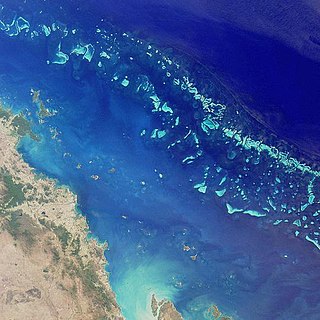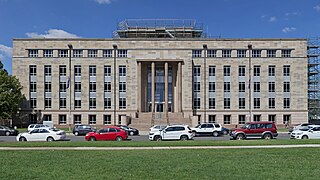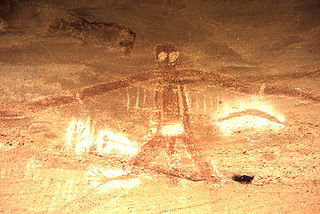Related Research Articles

Underwater archaeology is archaeology practiced underwater. As with all other branches of archaeology, it evolved from its roots in pre-history and in the classical era to include sites from the historical and industrial eras. Its acceptance has been a relatively late development due to the difficulties of accessing and working underwater sites, and because the application of archaeology to underwater sites initially emerged from the skills and tools developed by shipwreck salvagers. As a result, underwater archaeology initially struggled to establish itself as actual archaeological research. This changed when universities began teaching the subject and a theoretical and practical base for the sub-discipline was firmly established in the late 1980s. Underwater archaeology now has a number of branches including, maritime archaeology: the scientifically based study of past human life, behaviours and cultures and their activities in, on, around and (lately) under the sea, estuaries and rivers. This is most often effected using the physical remains found in, around or under salt or fresh water or buried beneath water-logged sediment. In recent years, the study of submerged WWII sites and of submerged aircraft in the form of underwater aviation archaeology have also emerged as bona fide activity.

Dhilba Guuranda–Innes National Park, formerly Innes National Park, is an IUCN-designated protected area in the Australian state of South Australia located on the southwest tip of Yorke Peninsula about 300 kilometres (190 mi) west of the state capital of Adelaide. It is a popular destination for camping, bushwalking, fishing, surfing and scuba diving.

A shipwreck is the wreckage of a ship that is located either beached on land or sunken to the bottom of a body of water. Shipwrecking may be intentional or unintentional. There were approximately three million shipwrecks worldwide as of January 1999, according to Angela Croome, a science writer and author who specialized in the history of underwater archaeology.
The Register of the National Estate was a heritage register that listed natural and cultural heritage places in Australia that was closed in 2007. Phasing out began in 2003, when the Australian National Heritage List and the Commonwealth Heritage List were created and by 2007 the Register had been replaced by these and various state and territory heritage registers.

The Australian National Heritage List or National Heritage List (NHL) is a heritage register, a list of national heritage places deemed to be of outstanding heritage significance to Australia, established in 2003. The list includes natural and historic places, including those of cultural significance to Indigenous Australians such as Aboriginal Australian sacred sites. Having been assessed against a set list of criteria, once a place is put on the National Heritage List, the provisions of the Environment Protection and Biodiversity Conservation Act 1999 apply.

The Australian Heritage Council is the principal adviser to the Australian Government on heritage matters. It was established on 19 February 2004 by the Australian Heritage Council Act 2003. The Council replaced the Australian Heritage Commission as the Australian Government's independent expert advisory body on heritage matters when the new Commonwealth heritage system was introduced in 2004 under amendments to the Environment Protection and Biodiversity Conservation Act 1999. The Council assesses nominations for the Australian National Heritage List and the Commonwealth Heritage List. The Minister may ask the Council for advice on action that he may take in relation to the List of Overseas Places of Historic Significance to Australia.

An Australian Aboriginal sacred site is a place deemed significant and meaningful by Aboriginal Australians based on their beliefs. It may include any feature in the landscape, and in coastal areas, these may lie underwater. The site's status is derived from an association with some aspect of social and cultural tradition, which is related to ancestral beings, collectively known as Dreamtime, who created both physical and social aspects of the world. The site may have its access restricted based on gender, clan or other Aboriginal grouping, or other factors.

The Commonwealth Heritage List is a heritage register established in 2003, which lists places under the control of the Australian government, on land or in waters directly owned by the Crown. Such places must have importance in relation to the natural or historic heritage of Australia, including those of cultural significance to Indigenous Australians. National heritage sites on the list are protected by the Environment Protection and Biodiversity Conservation Act 1999.
Lady Elliot was a ship that was probably wrecked off the coast near Cardwell, Queensland, Australia in 1816. It was a ship of 353 tons and had been constructed in Bengal, India, completed in 1815.
Australian heritage laws exist at the national (Commonwealth) level, and at each of Australian Capital Territory, New South Wales, Northern Territory, Queensland, South Australia, Tasmania, Victoria, Western Australia state and territory levels. Generally there are separate laws governing Aboriginal cultural heritage and sacred sites, and historical heritage. State laws also allow heritage to be protected through local government regulations, such as planning schemes, as well.
The Australian Heritage Database is a searchable online database of heritage sites in Australia. It is maintained by the Department of Agriculture, Water and the Environment as of 2022, in consultation with Australian Heritage Council. There are more than 20,000 entries in the database, which includes natural, historic and Indigenous heritage places, held in separately maintained lists.
The Queensland Heritage Register is a heritage register, a statutory list of places in Queensland, Australia that are protected by Queensland legislation, the Queensland Heritage Act 1992. It is maintained by the Queensland Heritage Council. As at 5 April 2020 there are 1790 places on the Queensland Heritage Register, including the Story Bridge in Brisbane and the Ross River Meatworks Chimney in Townsville.

The Historic Shipwrecks Act 1976 was an Act of the Parliament of Australia which legally protected historic shipwrecks and any relics or artefacts from those wrecks.
Balls Head Bay, formerly known as Oyster Cove, Wollstonecraft Bay,Sugarworks Bay, Powder Works Bay and Kerosene Bay, is a bay located to the west of the Waverton Peninsula, west of Balls Head and to the east of Berry Island, on the north of Sydney Harbour, Sydney, New South Wales, Australia.

SS Clan Ranald is a steamship wreck off the coast of South Australia that is of unique historic importance. She is the only example in Australian waters of a turret deck ship: a type of steel-hulled cargo ship with an unusual hull shape that was built in the 1890s and 1900s.
The Society for Underwater Historical Research (SUHR) was an amateur maritime archaeology organisation operating in South Australia (SA). It was formed in 1974 by recreational scuba divers and other persons to pursue an interest in maritime archaeology and maritime history. The SUHR was renamed as the South Australian Archaeology Society in March 2012 as part of a plan to expand its activities beyond maritime archaeology to include other archaeological disciplines.
Water Witch was a single-masted vessel rigged as a cutter built during 1835 in Van Diemen's Land and sunk in 1842 whilst moored in the River Murray at Moorundie, south of Blanchetown in South Australia (SA). Her wreck site was discovered in 1982 and received statutory protection as a historic shipwreck in 1983. The wreck site was the subject of an underwater survey in March 1984. She was the first European vessel to enter the River Murray via its mouth, her role in the charting of the lower reaches of the River Murray including Lake Alexandrina whilst under the command of William Pullen and her association with Edward John Eyre.
The Department of the Environment and Energy (DEE) was an Australian government department in existence between 2016 and 2020.

Margaret Brock Reef is a reef in the Australian state of South Australia located in the state's coastal waters on its south-east coast about 7 kilometres (4.3 mi) west of the headland of Cape Jaffa and about 27.2 kilometres (16.9 mi) south-west of the town of Kingston SE. It is the site of both a navigation aid which operated as a staffed lighthouse from 1872 to 1973 and as an automatic beacon onward to the present day, and a rock lobster sanctuary declared under state law in 1973. It is named after the barque Margaret Brock which was wrecked there in 1852.

The Underwater Cultural Heritage Act 2018 is an Australian Act of Parliament designed "to protect shipwrecks, sunken aircraft and their associated artefacts, that occurred 75 or more years ago, regardless of whether their location is known". Other underwater heritage items, and more recent shipwrecks or aircraft, may be protected through a declaration under the Underwater Heritage Act, and some sites also have a protected zone around them. The federal government works in collaboration with State and Territory Government agencies to protect and conserve Australia's underwater heritage.
References
- 1 2 "Australian Shipwreck Database". Australasian Institute of Maritime Archaeology. Archived from the original on 15 October 2019. Retrieved 15 October 2019.
- 1 2 3 4 "Australasian Underwater Cultural Heritage Database". Australian Government. Dept of the Environment and Energy. Archived from the original on 14 October 2019. Retrieved 14 October 2019.
- ↑ "Australasian Underwater Cultural Heritage Database: People, places and themes search". Australian Government. Dept of the Environment and Energy. Archived from the original on 15 October 2019. Retrieved 15 October 2019.
- ↑ "Underwater Cultural Heritage Act 2018: No. 85, 2018". Australian Government. Federal Register of Legislation. Archived from the original on 12 May 2019. Retrieved 15 October 2019.
- ↑ "Underwater cultural heritage". Australian Government. Dept of the Environment and Energy. Archived from the original on 16 October 2019. Retrieved 15 October 2019.
- ↑ "Underwater Cultural Heritage Act 2018". Victoria State Government. Archived from the original on 15 October 2019. Retrieved 15 October 2019.
- ↑ "Heritage places and lists". Australian Government. Dept of the Environment and Energy. Archived from the original on 17 December 2019. Retrieved 31 January 2020.
- ↑ "Australian Heritage Database". Australian Government. Dept of the Environment and Energy. Archived from the original on 15 November 2019. Retrieved 31 January 2020.